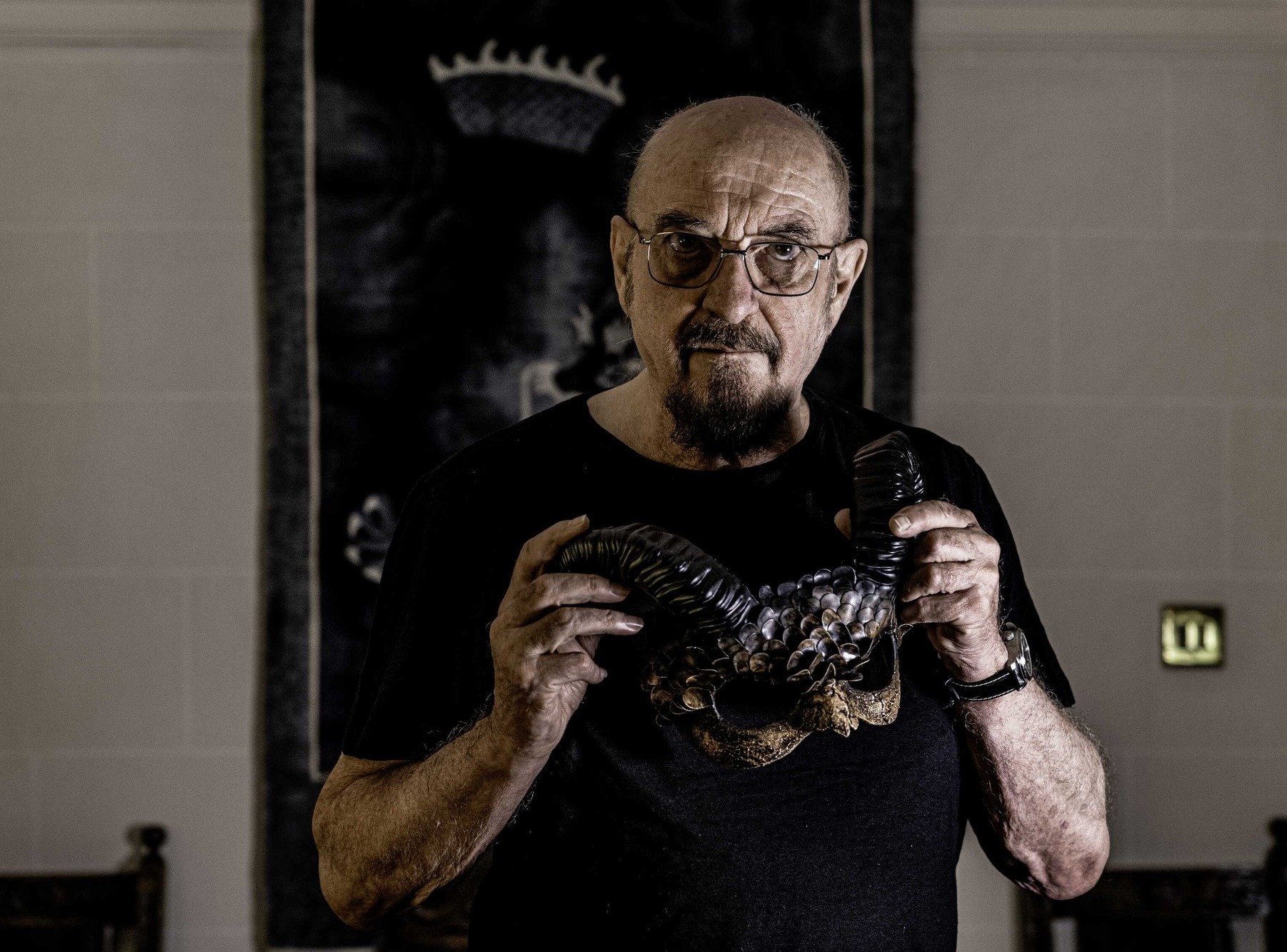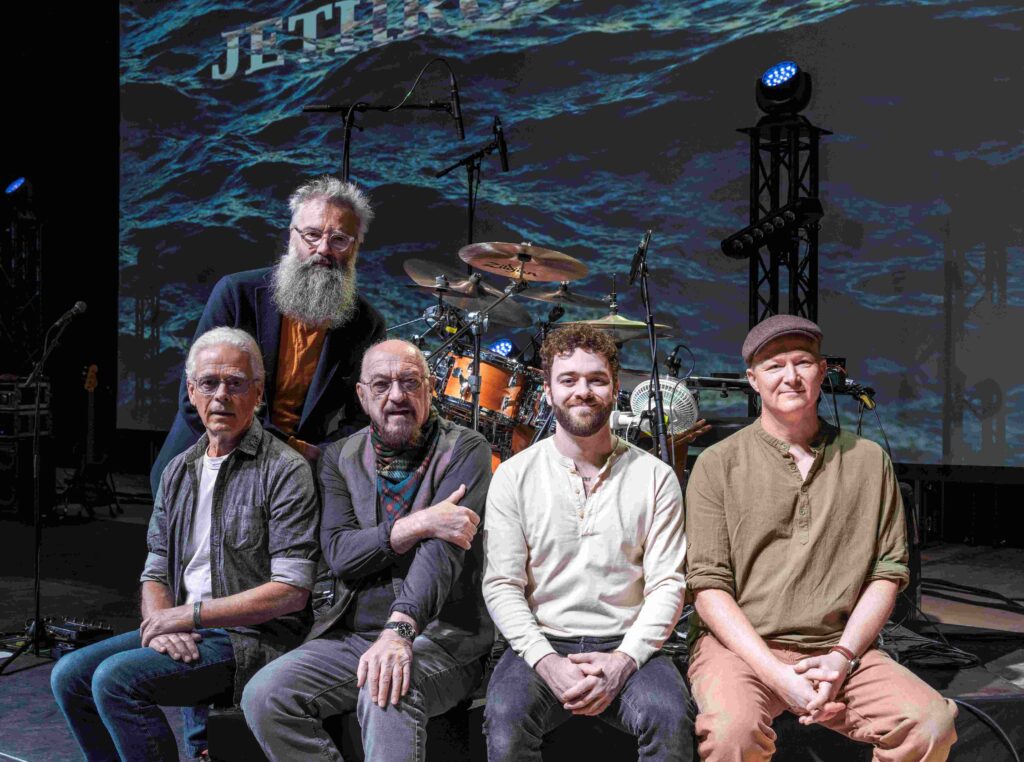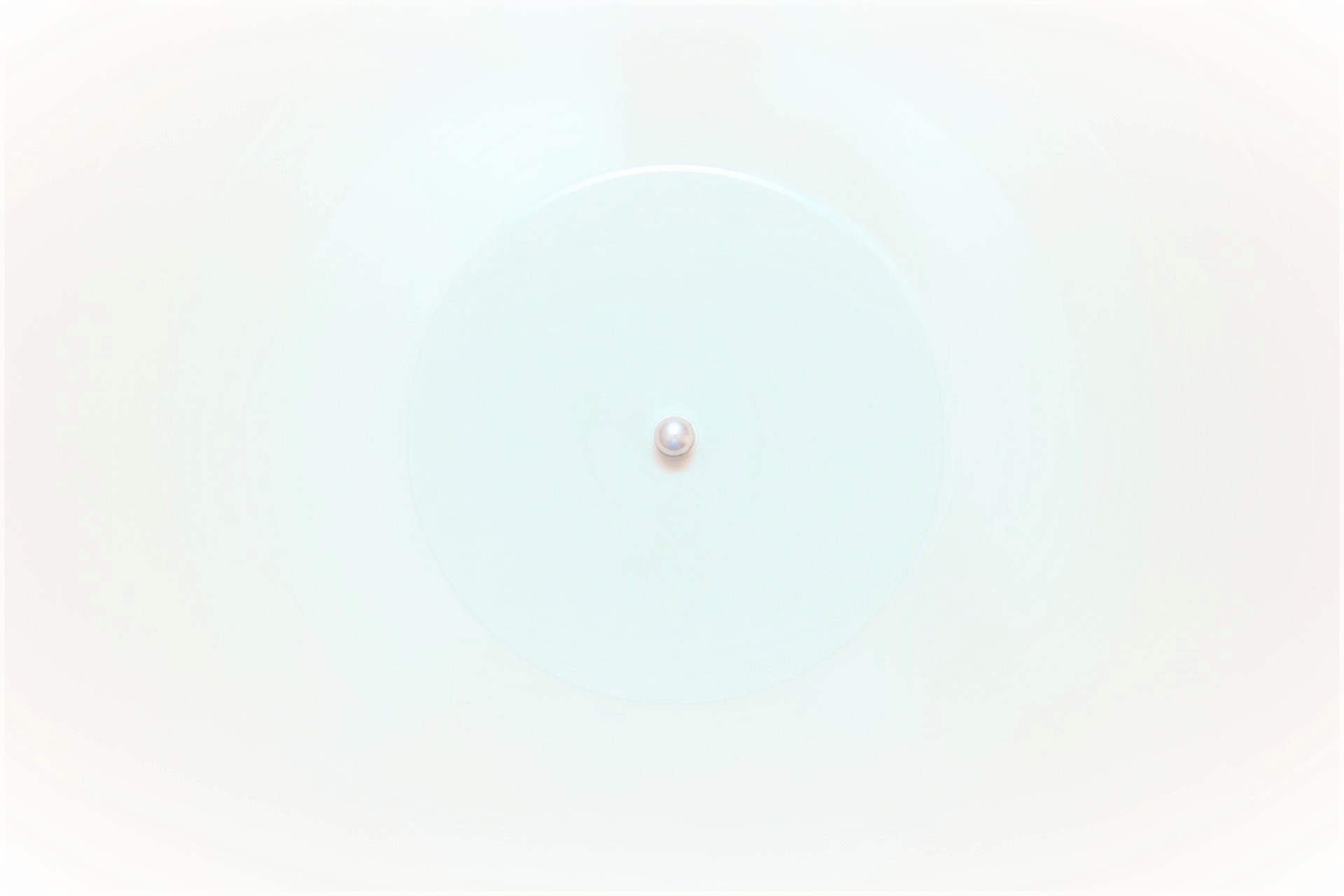
Ian Anderson, Jethro Tull (Credit: Ian Anderson)
There’s something perversely satisfying about Ian Anderson’s approach to songwriting. Some artists hoard demos like dragon treasure, stockpiling scraps and unfinished ideas for decades before nervously dusting them off for a reunion cash-in. Not Anderson. If it doesn’t work, it’s gone. If it needs trimming, it gets the chop. He calls it “destructive recording.” Others might call it ruthless efficiency. Either way, it’s why Curious Ruminant, the latest Jethro Tull album, feels like the work of a man who still sees no reason to waste time.
Paul Robinson spoke to Anderson for a conversation that ranged from medieval metaphors to the philosophy of musical urgency, from forgotten demos resurrected to the pleasures of a well-placed mandolin. Expect ruminations, yes, but the curious kind, the kind that asks questions rather than wallowing in the past.
This will be your first album since the two consecutive releases in 2022 and 2023. How much of you time has been spent working on Curious Ruminant?
Some material was demoed way back in 2007. The long song Drink from the Same Well began its life in 2007 as a demo I made for a live performance with Hariprasad Chaurasia, the Indian classical flautist. That demo harks back to that time. It was never recorded, released, or actually played during the tour we did with Hariprasad in India and Dubai.
It was set aside and forgotten until my son discovered it on an old computer. He was about to erase some old files and asked, “What’s this?” I said, “Oh, that sounds familiar,” because it had a working title. I kept the keyboards from that demo and recorded new flutes, bass guitar, drums, cajón, electric guitars, and acoustic guitars, turning it into a big, epic Jethro Tull song. I believe it’s the third-longest piece I’ve done.
Thick as a Brick is supposedly one long track, and there’s also a long track called Baker Street Muse, which is longer than this slightly edited version of Drink from the Same Well. However, Drink from the Same Well might have been the second-longest track if I hadn’t edited it down and removed some of the repeated sections.
So yes, it dates back to 2007, but most of the work—all the lyrics and the bulk of the music—was recorded between May and July. I completed it by the end of July and spent the next month working on the artwork, booklets, photographs, and everything else, once the recording and master mixing were finished.
The title Curious Ruminant – does that suggest that maybe you’ve spent a significant amount of time contemplating this album, ruminating about this album?
Yes, it does. One of my ecclesiastical friends—now retired, a canon of Wakefield Cathedral—sent me an email when the title track was released as a video. On the day it came out, he immediately listened to it and emailed me, asking, “Curious ruminant, what does that mean? Does it mean nosy cow?”
I replied, “Not really.” It’s “curious” in the sense of having curiosity—not in the sense of being weird or odd, but of wanting to learn something. Once you’ve learned it and registered it, the “ruminant” part comes in. As a noun, a ruminant often refers to a three-toed mammal that chews the cud, regurgitates it, and enjoys a second helping. But it also refers to a contemplative person.
That’s what I try to do every day: to learn something new. I like to go to bed at night thinking, “I’m in possession of a little more knowledge than I had yesterday. I learned something today.” Then, I run through it in my head and think about it. That’s when you start to put things into context with who you are and your life.
So I think these two processes—having curiosity and then reflecting on it—are separate but complementary. Together, they add to what feels like an almost full hard disk.
The band of David Goodier, John O’Hara and Scott Hammond has been augmented with the debut of guitarist Jack Clark and also features former keyboardist Andrew Giddings and drummer James Duncan. Why this particular band line up, Ian?
Andrew Gooding contributed because we kept his keyboard part from the demo we made way back when. And James stepped in because he was available to work on days when Scott was tied up. All of this took place during a relatively low-pressure period of time.
I had set aside some time last summer to record a new album. Once I started, though, I was working toward a deadline to release it in the early part of this year. The band members weren’t always available; they had their summer holidays planned, other projects they were involved in, or teaching commitments when they weren’t working with me. Three of them teach, so coordinating everyone’s schedule was a bit challenging.
James, however, was available and could drop what he was doing to come over and set up his drums in the studio. We recorded with him, and then Scott eventually found a couple of free days, allowing us to add his parts into the mix as well.
When working with a band, it becomes apparent how much the musical skills and stylistic choices of each member bring to a project. Once they go beyond the basic root notes of an arrangement, they add nuance, flavor, and subtlety to the recording. As a producer and mixing engineer, I enjoy working with those idiosyncratic contributions from individuals. It’s exciting to build upon them, and it results in something unique.
This dynamic always creates a sound that’s different from what you’d get if it were just me, one other person, or a group of session musicians strictly playing parts written out for them. I’ve always valued the input from band members over the last, what is it now—56 years or so.

You’ve talked already about Drink From The Same Well going back to 2007, given that some of the songs are from unfinished demos, is there quite a range of styles on this album?
Yes, with the additional music that was added, everything developed during the recording process. Since there were no lyrics initially, they were all written fairly quickly towards the end of May or the beginning of June. It was a fast process to get everything into shape.
For me, as a songwriter, the most important thing is the impetus and momentum you build from writing something to completing a master recording. Sometimes, I’ve made very simple demos for the band to learn before we rehearse and record. But often, when I open my mouth to sing, I aim to have a master vocal done within an hour or an hour and a half. I really don’t like to linger—it’s about capturing the moment.
It’s similar to the “decisive moment” in photography, as Cartier-Bresson put it. The same principle applies to songwriting and singing. Some of the best songs I’ve written were completed and recorded on the same day, which is always deeply satisfying.
That feeling of immediacy doesn’t mean it’s slapdash—it’s about harnessing the creative momentum. For the next few days, that energy becomes an unstoppable force, and riding that musical equivalent of a bullet train is incredibly exciting.
The songs on this album seem to be a bit more personal to you Ian. Was that a deliberate decision, or just the way the songs turned out?
From the start of working on the lyrics, I deliberately aimed for something more personal. You’ll notice in the lyrics there are far more instances of “I” and “me” pronouns. Normally, I’m a more objective writer—something between landscape and portrait in terms of perspective—writing about things that are sometimes real, sometimes imaginary. These could be stereotypes inspired by real-life acquaintances or even people I’ve seen on CNN or BBC News, though not necessarily anyone I know personally.
This album, however, is different. It’s really about me—not in a soul-baring, Alanis Morissette, heart-on-sleeve, “poor me” way, nor in the “woke up this morning” blues tradition. It’s still objective to a degree, but told from a much more personal point of view.
I set out with that intention, to make it lyrically more intimate. At the same time, musically, it’s still very much a band album.
We’ve talked about Drink From The Same Well already, 17 minutes, Interim Sleep, 2 and a half minutes. So, massive range in the duration of the songs. How do you decide that? Is it about the story you have to tell, how much you have to communicate, how do songs end up the duration they are?
It’s not about running out of steam; it’s about creating something that feels more developmental. It’s not a matter of being complicated just for the sake of it. Sometimes, musically, you want to expand on an idea, even if the lyrics themselves don’t necessarily grow to match that scope. When you lay the lyrics out on paper—even with all the chorus repeats and other sections—they usually take up about the same amount of space in the album booklet. However, the musical material behind them can vary widely in complexity.
Take Interim Sleep, for example. It was originally written as something between prose and poetry, serving as an imaginary comfort to the recently bereaved. It’s written as if I’m advising someone not to mourn too much expressing the idea that, “I’m just somewhere in the next room,” or, “out the window in the stars.” It’s meant to offer comfort, not in a morbid way, but as something uplifting and spiritually warming.
It was never meant to be a long piece. I did try a melodic, sung version, but compared to the spoken-word version, it didn’t work. I’m never afraid to hit the delete button, and once it’s gone, it’s gone forever. I use what’s called “destructive recording” in the digital domain, which means that when I re-record something on a track, the previous version is completely erased. There’s no going back, no keeping multiple takes to sift through later.
I really dislike the modern approach of keeping every take and then piecing them together afterward. Some of the band members—or to be honest, all of them—prefer that method. They’ll say, “Can we keep that one and do another?” But to me, if you want to do another, it means the first one isn’t good enough. Why keep it? They like to compile bits from various takes, but I find that process painfully boring.
For me, if something isn’t right—whether it’s timing, tuning, diction, or a technical issue—I’d rather just redo it until it’s correct. I don’t want to clutter up the hard drive—or my brain—with material that isn’t needed. That’s how I’ve always worked, dating back to the analog days of recording. On tape, once you recorded over a track, the old take was gone for good. I’ve been working this way for 56 years, and I don’t regret anything I’ve deleted—mainly because I can’t remember what it was anyway.
There’s a nice flavour of acoustic folk to this album, which I’m sure will please the fans who’ve been with you for decades. Was that intentional, or again just the way it turned out?
That was quite intentional. I dug out a mandolin, put some new strings on it, and even bought a little tenor guitar—a four-string guitar tuned like a mandolin. I kept those instruments nearby, and they became the starting point for writing three or four songs. It was a deliberate choice to approach those songs from a different direction.
Even though some of the tracks ended up with full band arrangements—complete with drums, bass, and electric guitars—they all began with a master mandolin track and master vocals. That initial framework was the part I focused on, much like some of the songs on the Aqualung album back in 1971, which I recorded in the studio when the other guys were either on a tea break or not scheduled to come in that day.
I wouldn’t want to make an entire album that way, but it’s nice to approach a few songs with a clear, definitive master recording. From there, other musicians can thoughtfully add to it with some direction from me—for example, advising what kind of sound to use in certain sections or when to hold back and come in later.
What are you plans to tour with the album?
Sadly, the days of touring an album by playing it in full on stage are largely gone. Even back in 1969, after our second album, we already faced the challenge of choosing what to leave out because there was more material than we could fit into a live concert. Over the years, that challenge has only grown. Now, it’s impossible to represent the full scope of musical styles and eras we’ve worked in, so we have to select examples that hint at the bigger picture.
These days, whether the audience consists of longtime fans, newer converts, or even the grandchildren of the original fans, most people want that broader overview of the repertoire. They’re not looking for half the concert to be a complete rendition of a new album. I did that once, back in 2012, but I don’t think it’s what people expect now. Some might enjoy it, but we have to assume the majority prefer hearing a mix: a few selections from a new album without overloading the set.
For this year, we’ve planned two songs from the new album, starting in April, with the possibility of adding a third depending on how it’s received. We also want to include songs from the last two albums (2022 and 2023), along with all the older material going back to 1968. It’s about creating a satisfying bigger picture for the audience—and for me, too.
For example, we’ve included a couple of songs from the first album that haven’t been played in years. It’s interesting to revisit those. Sometimes I find myself thinking about them late at night, hearing them in my head. Even after all this time, they have a kind of earworm quality, and I look forward to performing them again—for a while, at least. Of course, after months of playing the same songs, the excitement cools, but there are always a few that feel timeless.
Some songs, like Aqualung, Locomotive Breath, and Bourrée, are landmarks. They’ve stayed in the setlist, not out of obligation but because I’m genuinely proud of them. Over the years, we’ve performed them in different arrangements—sometimes sticking closely to the originals, other times reimagining them entirely. These songs hold a special place for me, and they remain staples of the live show.
Beyond those, there’s a rotating group of tracks that appear in the set every few years, along with others that might surface once every five or ten years. Occasionally, we even dig up songs that have rarely, if ever, been played live. Last year, we performed a couple of tracks that had either never been played live or had only been done briefly when they were first recorded. That’s always an interesting challenge—not because they’re impossible to play, but because they’re tricky and unfamiliar.
With such a vast catalogue, it’s hard to make choices. Taking audience requests isn’t feasible either. Modern concerts rely on synced video content, lighting cues, and technology that ties everything together, so last-minute changes disrupt the entire system. Even if the band can play a song, it’s not practical for the crew and production team.
Further information
The new Jethro Tull album Curious Ruminant is released on 7th March





One of the finest interviews …really enjoyed it…
Really interesting interview. Ian revealed more that he usually does.
Oh and I’m his “ecclesiastical friend”!